Pharm Exec 50: Growth from the Bottom Up
More consolidation didn't boost sales at the top, but a handful of nimble newcomers posted impressive growth on the other end of the curve.
This year's Pharm Exec 50 shows an industry whose growth has slowed to a crawl in the face of patent expirations, aggressive payers, and a tough environment for approvals. The 50 this year sold $610 billion in human prescription pharmaceuticals, up just 2.8 percent from last year's $593 billion. The top 10 grew even more slowly—by just 2.6 percent—and accounted for 59 percent of the 50's total sales, just like last year.
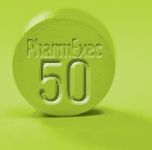
Getty Images / Jed Share
In a year in which investors have looked with increasing disfavor on large R&D budgets, R&D spending grew by just 4.5 percent, from $101 billion to $105. Among the top 10, R&D was almost flat, growing by just 1.6 percent.

Top 20 Global Products
Four companies dropped off the 50 because of mergers: Genzyme (last year's number 29), now a part of Sanofi Aventis; Alcon (previously 39), which was acquired by Novartis; Cephalon (previously 40), which is now a part of Teva; and Nycomed (previously 48), bought by Takeda.

Top 20 Global Therapeutic Classes
The consolidation that knocked these companies off the list had another effect: The companies at the bottom of the list are smaller. Every company in the 50 last year had sales of at least $2 billion. This year, the smallest, Aspen, had sales of $1.66 billion. The drop is even steeper when you look at revenue as a percentage of the total revenues of the whole Pharm Exec 50. Last year's smallest company accounted for 0.4 percent of the total revenue of all 50 companies in the ranking. This year, the equivalent figure was 0.2 percent—only half as big a percentage. By way of comparison, in 2004, the first year when all 50 companies had sales of more than $1 billion, the smallest company accounted for 0.3 percent of the revenue of the 50.

Channel Distribution by US Dispensed Prescriptions and US Sales
New additions include a reincarnated Valeant (44), formed when Biovail—Canada's largest publicly held pharma, a specialist in CNS drugs and delivery—purchased the American firm for $3.3 billion, adopting its name and putting Valeant CEO Michael Pearson in charge of the combined operation. Endo Pharmaceuticals (45) is currently in the process of "reinventing" itself with a new business model and name (Endo Health Solutions); the company grew its branded and prescription pharmaceutical business by 38 percent in 2011. Grifols, the Spanish manufacturer of plasma fractionation products (47), grew revenues by more than 80 percent, partly as a result of the acquisition of US-based Talecris. And finally, Aspen Pharmacare, the 50's first African company, grew its revenues by 29 percent last year, and its CAGR since 1998 is 46 percent. The company has been expanding its footprint, most recently by the acquisition of Australia's Sigma.

Top 25 Corporations by US Prescriptions
While some of the data this year may be a little depressing (incidentally, the anti-depression class of drugs jumped to number one in the US, surpassing lipid regulators), the hint of diversity and new ideas creeping up from the bottom of the list is a cause—albeit a small-cap one—for optimism.
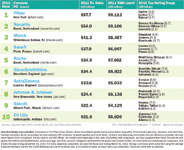

Top 25 Corporations by US Sales
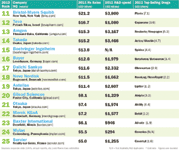

Top 25 US Pharma Products by Prescriptions
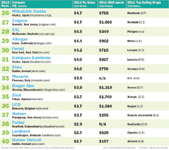

Top 25 US Pharma Products by Sales

Patent expiries
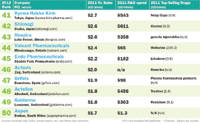
*Special thanks to the IMS Institute for Healthcare Informatics and IMS Health for supplemental data
The Top 10 Year In Review
1. Pfizer faced a brutal year of patent expirations in 2011, including not just US exclusivity loss for its leading product, Lipitor, but Aromasin, Xalatan, Vfend, and Protonix as well. Still, the industry giant had five products that sold $2 billion or more, and revenues that topped $500 million in 18 countries outside the US. It also acquired King for $3.6 billion, providing a broader profile in pain, and sold formulation specialist Capsugel. Approvals included Xalkori (crizotinib) for some lung cancers with the ALK gene.
2. Novartis won 15 approvals in the United States, the EU, and Japan. Among them was US approval for Arcapta Inhalr for COPD. It also launched the oral MS drug Gilenya. While still integrating Alcon, the world's largest eyecare company, acquired last year, Novartis bought Genoptix, a diagnostics company, for $458 million, and hit a key landmark as Sandoz's generic version of the anticoagulant enoxaparin became the company's first "generic blockbuster," with sales of more than $1 billion.
3. Merck gained FDA and EU approval for Victrelis, the first new medicine for chronic hepatitis C in almost a decade. Other approvals included Juvisync, a combination of the diabetes drug Januvia with the statin Zocor. Merck also bought Inspire, an ophthalmic specialty firm, for $430 million and formed alliances with India's Sun Pharma (to promote branded generics in emerging markets) and Parexel (to pursue biosimilars). As the year ended, CEO Kenneth Frazier was appointed chairman, replacing Richard Clark.
4. Sanofi acquired Genzyme for $20 billion in April, the largest of 30 new transactions in 2011. Others included the acquisition of pediatric specialist Topaz Pharmaceuticals and Universal Medicare, a consumer health company in India. Jevtana, for advanced prostate cancer, launched in Europe, and the Allegra family of allergy products launched in the US on an over-the-counter basis. Lost market exclusivity included Taxotere, Xatral, and Nasacort in the US and Aprovel in Western Europe.
5. Roche gained simultaneous FDA approval for Zelboraf, a targeted therapy for metastatic melanoma, and its companion diagnostic test—a first. It also acquired Anadys, a hepatitis C specialist, for $230 million, and announced a partnership with Evotec to develop oncology biomarkers. In a controversial decision, FDA withdrew approval of Roche's Avastin for breast cancer—though CMS announced it would continue to reimburse for it. For the first time, the family-owned bloc of Roche shares dipped below 50 percent when Maia Oeri dropped out of the group.
6. GlaxoSmithKline announced the $660 million sale of 17 noncore OTC brands, including Beano, Goody's, Ecotrin, Fiber Choice, Sominex, and Tagamet, to Prestige Brands. US approvals included Benlysta, the first new lupus treatment in more than 50 years (developed with Human Genome Sciences); the anticonvulsant Potigal (developed with Valeant); and Horizant for restless leg syndrome (developed with XenoPort).
7. AstraZeneca sold its Astra Tech subsidiary, which makes dental implants and medical devices for surgery and urology, to Dentsply for $1.8 billion. FDA approved Brilinta, AZ's new anticoagulant, reversing its 2010 rejection of the drug, as well as giving the nod to Caprelsa, the first approved therapy for nonoperable advanced medullary thyroid cancer, an orphan condition. Meanwhile, Japanese regulators approved Nexium—a decade after the drug's US launch.
8. Johnson & Johnson, while struggling to put manufacturing problems behind it, took a commanding position in the orthopedic market with its $21.3 billion acquisition of medical-equipment maker Synthes. It won approval for Zytiga (for late-stage prostate cancer) and the anticoagulant Xarelto. J&J exited the drug-eluting stent market it helped create. It sold off its Jannsen dermatology business and the US rights to St. Joseph's aspirin, and bought the over-the-counter brands of India's J.B. Chemicals & Pharmaceuticals.
9. Abbott announced plans to split itself into two companies: a medical products company focused on medical devices, branded generics, and nutritionals; and a research-based pharmaceutical company. The spinoff is slated to take place late this year. Abbott also received European approval for a new absorbable heart stent, and filed for multiple new indications for Humira.
10. Eli Lilly successfully fended off a challenge to its Cymbalta patent in federal court, preserving its market exclusivity until at least June 2013. It won US and EU market approval for Bydureon, the diabetes drug it developed with Amylin, only to have the nine-year-old partnership break up in November. It announced a strategic alliance with Boehringer Ingelheim focused on diabetes. The partnership won US and UK approval for Tradjenta/Trajenta. In July, Lilly acquired the animal health business of Janssen, a Johnson & Johnson company.
About the Authors
Jerry Cacciotti is a Partner in Oliver Wyman's Health and Life Sciences Practice. He can be reached at Jerry.Cacciotti@oliverwyman.com
Patrick Clinton is Marketing Director in the Health & Life Sciences practice of Oliver Wyman. He can be reached at Patrick.Clinton@oliverwyman.com
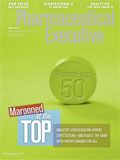
Regeneron, Roche Launch Major US Expansion Plans to Meet Growing Demand for Biologics and Innovation
April 22nd 2025With combined investments exceeding $53 billion, both companies are deepening their US presence through expanded biologics production, gene therapy capabilities, and next generation R&D centers.
Cell and Gene Therapy Check-in 2024
January 18th 2024Fran Gregory, VP of Emerging Therapies, Cardinal Health discusses her career, how both CAR-T therapies and personalization have been gaining momentum and what kind of progress we expect to see from them, some of the biggest hurdles facing their section of the industry, the importance of patient advocacy and so much more.